Pro-Touring Engineering from Detroit Speed
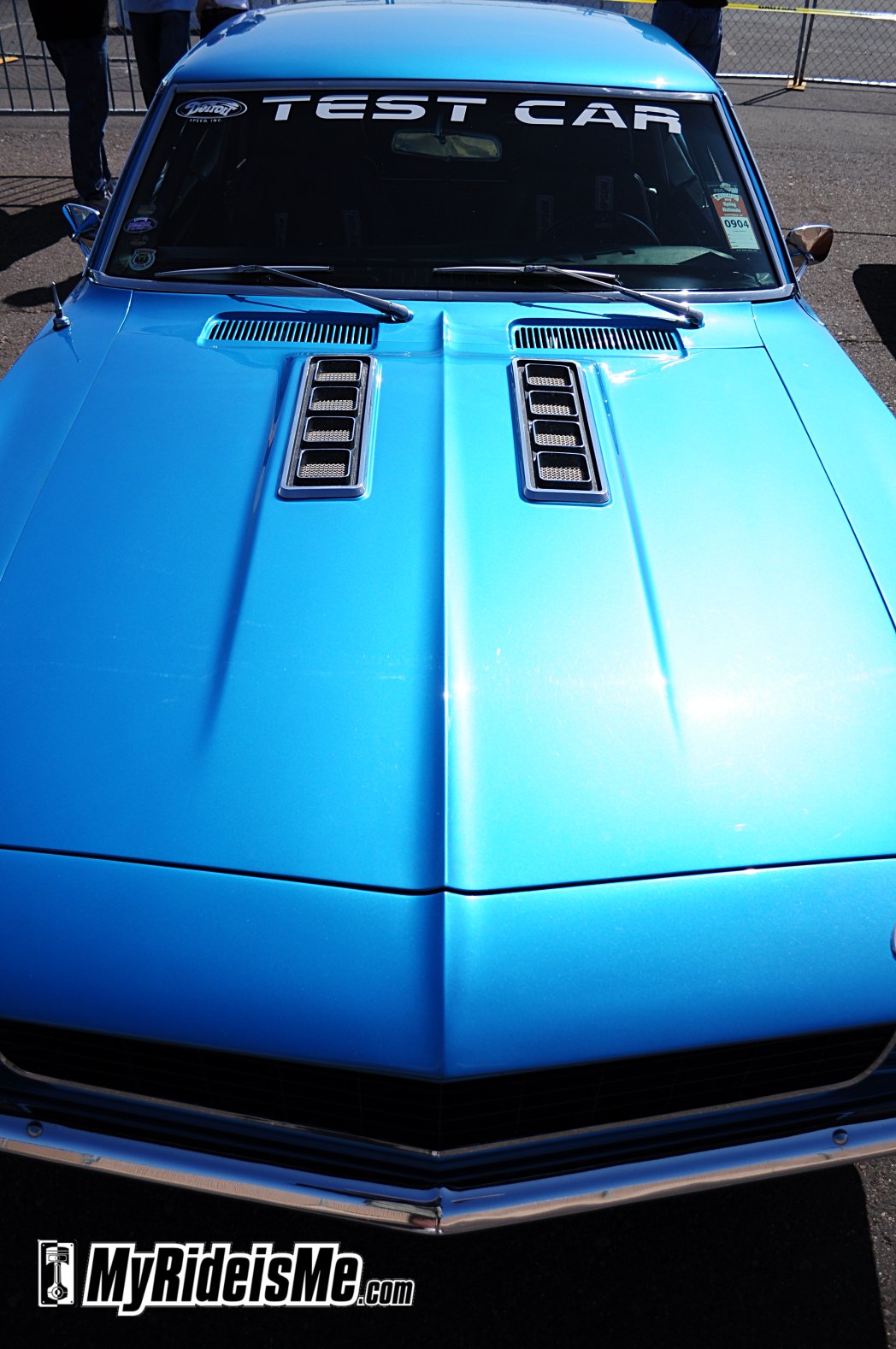
One of the best things about the expansion of hot rodding is the availability of aftermarket parts. The only downside, especially if you own a 1st gen Camaro, might be too many choices! After you’ve decided to make your ride turn as hard as it accelerates, you probably hit the web for discussion forums and communities like MyRideisMe.com to ask friends, “What’d you use?” Unfortunately, there’s general wisdom about opinions, how’s that go?? I know it finishes, “Everyone’s got one…”
Left to make the choice alone, how do you chose? Would it matter to you if the supplier was owned by suspension engineers from GM? Enter Detroit Speed Inc.
The bright blue colored Camaro’s prominently labeled, “Test Car” caught my attention at the 2010 Goodguys Spring Nationals first thing in the morning. I saw “Detroit Speed” discretely sticker’d on the fender, so walking through the supplier pits, I saw Detroit Speed and stopped in to find out what “test car” meant. I talked briefly with Kyle Tucker, president and husband of the husband and wife owner team. Kyle told me to go see Stacy to learn more about the cars and get a ride.
Ride?!
Stacy’s a name that could be a man or woman, so don’t make my mistake and assume the driver’s a man! Over at the autocross, I met Stacy Tucker, Kyle’s wife, co-owner and driver of her 1969 Camaro above. Happily surprised, I asked, “Can I have a ride!?”
That’s when I learned first hand about Detroit Speed. Looking back, Stacy and Kyle were both working 9-5 at the General as suspension engineers, but were always auto enthusiasts. With a hobby focus, they built a 1969 Camaro called “Twister” filled with custom parts engineered with knowledge they both learned as mechanical engineers at GM.
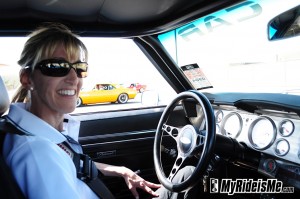 Twister grabbed immediate attention and questions like, “Can you do that for my car?” After hearing that question several times and checking what was available in the market, Stacy and Kyle decided to both leave the relative security of GM and start Detroit Speed 9 years ago.
Twister grabbed immediate attention and questions like, “Can you do that for my car?” After hearing that question several times and checking what was available in the market, Stacy and Kyle decided to both leave the relative security of GM and start Detroit Speed 9 years ago.
Stacy’s Camaro features Detroit Speed’s hydroformed front subframe and quadralink rear with mini-tub. If you’re scratching your head, “What’s that?”, check out Detroit Speed’s website. Their products are featured by vehicle model and Stacy’s ride shows off the 67-69 Camaro parts. Very cool! There’s parts for Camaros/Firebirds, Nova’s, Chevy II’s and A-bodies. Soon, they’ll add the blue oval to their inventory with parts for Mustangs.
On the track, Stacy pushes her car to the limit and nearly beyond. She takes this same car to the mall and grocery shopping, so all that experience helped her keep it off the wall! Unaffected, Stacy came back a lap or two later and set her best time of the day. Later, she added some un-needed ballast in the form of yours truly! Fact: It’s alot faster in the car! (My mom’s cringing as she reads this story… It’s ok Mom, we had our seatbelts on!)
So when you’re shopping for parts, ask the vendor, “Who engineers your parts and how are they tested?” That question’s easily answered by Stacy and Kyle.
Before parts hit the track, DSE uses a host of modern, high tech gear like a Romer arm CMM machine. CMM machines digitally measure 3D spaces like the underside of you 60’s ride using a robotic arm. After careful measurement, parts are designed in 3D then tested using finite element analysis (FEA) software named Cosmos. FEA’s another modern digital trick ensuring the strongest, lightest part design possible before the parts are actually built. In fewer words, it’s digital “trial and error”. You get more trials, quicker, at a lower cost. The alternative to FEA is building a part that’s stronger than needed and you know what that means: Heavy, and probably more expensive.
I couldn’t write fast enough to catch the other test equipment available at DSE including a Shock dyno and steering dyno so that every part gets fully tested for fatigue in their lab.
Now based in North Carolina, you can find Detroit Speed “testing” all over the country at Goodguys autocross events. Based on the Stacy’s smile (not quite as cheezy as mine) I’m not sure this is all work.
I hope to see more of the Tucker’s and their small, but possibly growing fleet of test cars, don’t you?
When engineering meets careful design and lab testing, then finally real world abuse, your decision about what parts to choose should be alot easier to make.
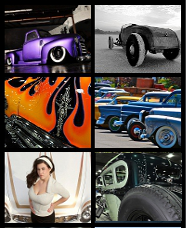


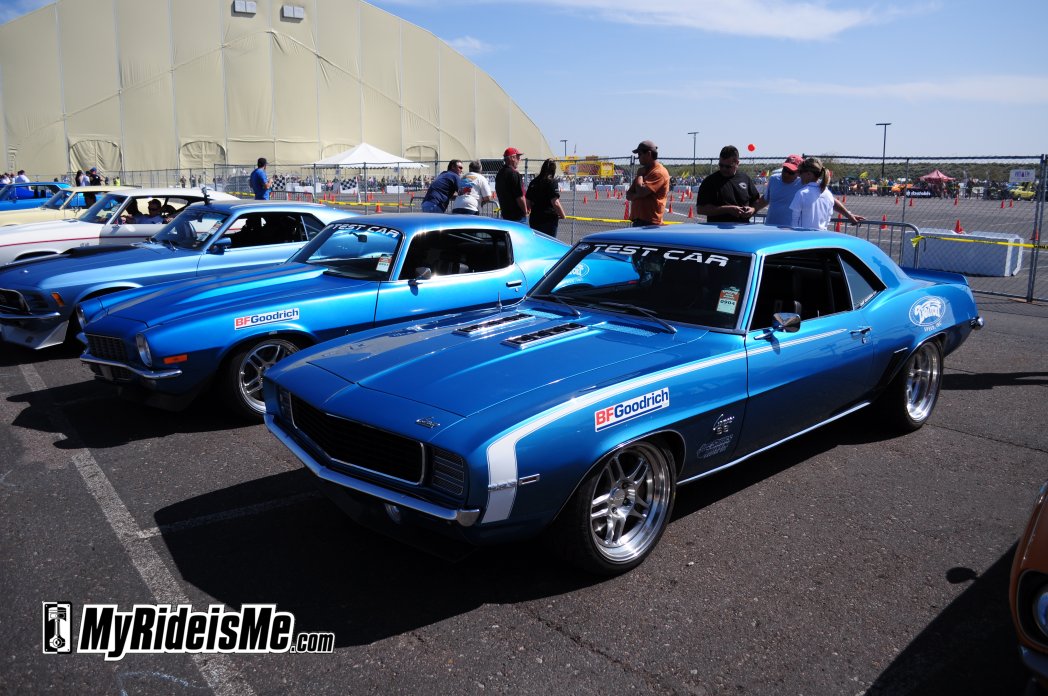
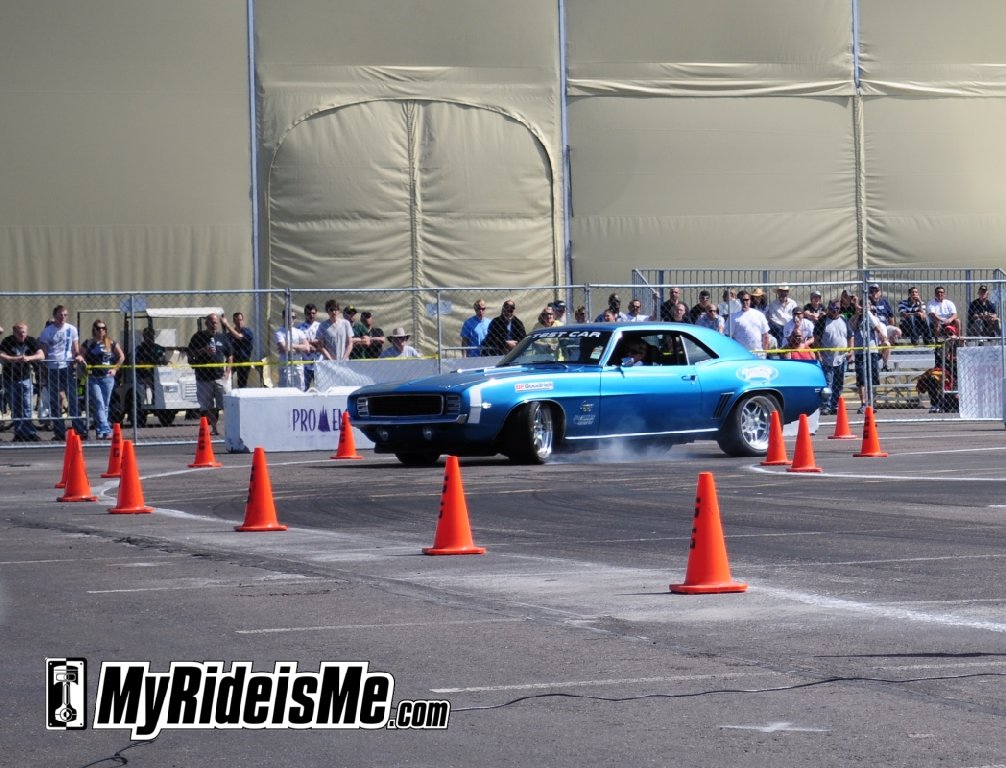
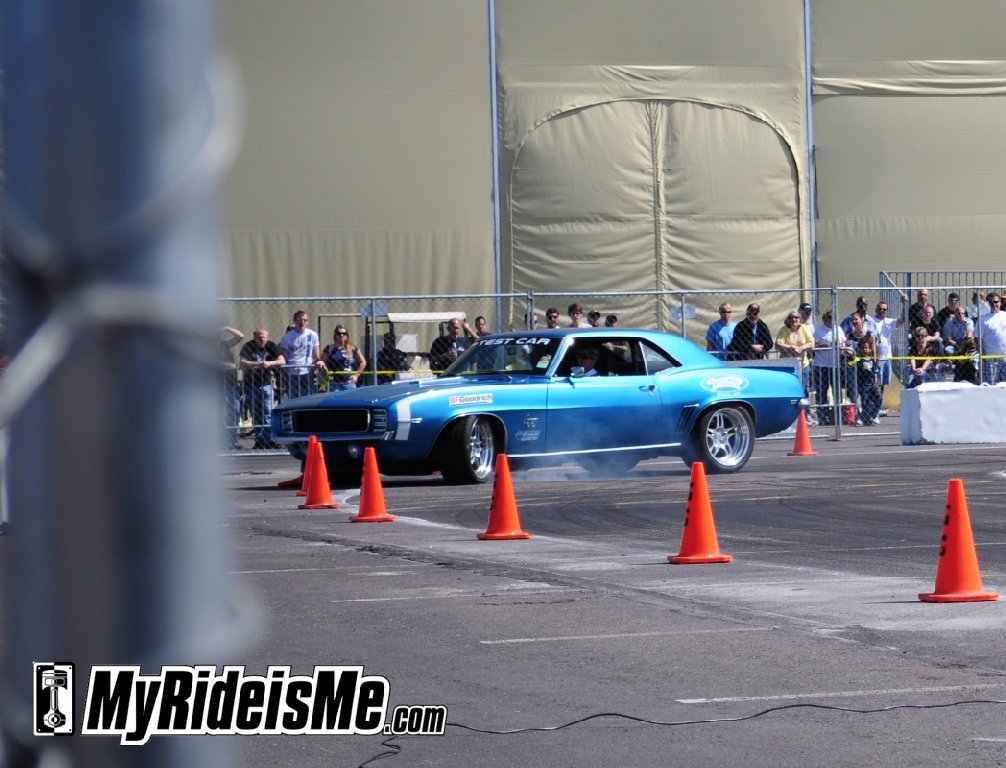
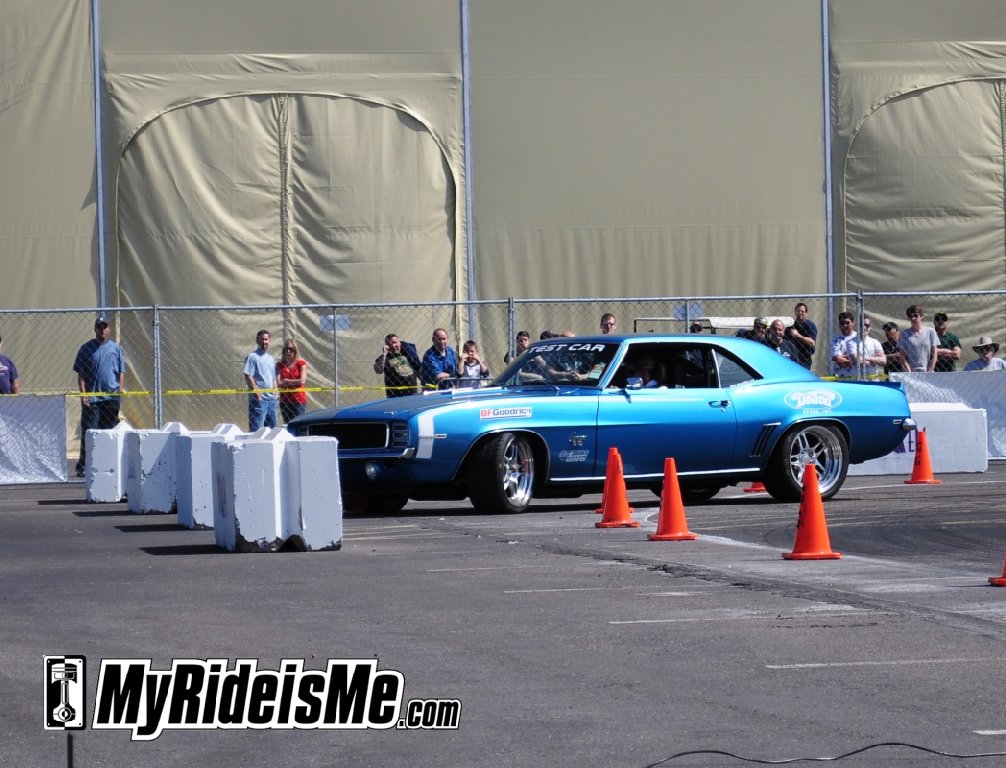
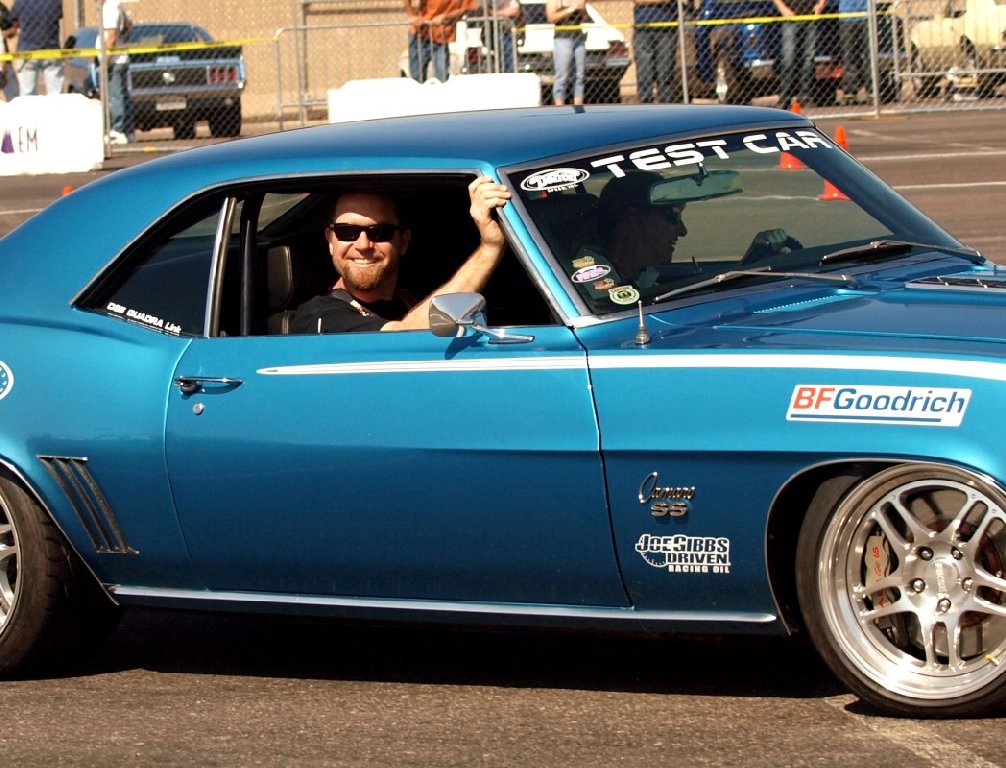






Geekin’ out on the FEA and DMM eh? Ha ha, very cool! You look good in a Chevy there Pike. ;) LOL
i wish i could get your co to make 1966 gto new agian some day